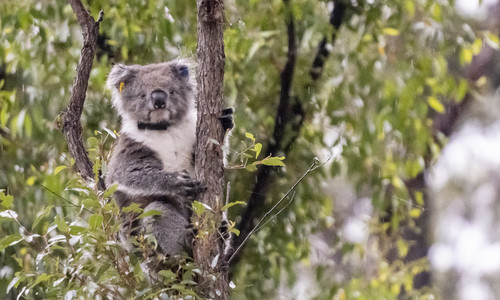Black summer bushfire koalas return to the wild
Fourteen koalas rescued during last summer's devastating Victorian bushfires have finally returned home.
Each of the koalas received emergency treatment at triage centres set up in the East Gippsland bushfire zones immediately after the blazes in January this year. They then continued their recovery journey at Zoos Victoria's veterinary facilities at Healesville Sanctuary and Melbourne Zoo. Some required multiple surgeries for severe burns and many months of follow-up treatment.
When they had sufficiently recovered, the koalas continued their rehabilitation for release under Zoos Victoria veterinary supervision in large enclosures at Phillip Island Nature Parks and Healesville Sanctuary where they were able to gain the climbing strength and fitness which is so vital for successful release back to the wild.

Over the past month, the rehabilitated koalas have been released into bushland at sites in East Gippsland, close to where they were originally found, with the final group of eight released this past weekend in regenerated bushland around Mallacoota.
It is estimated that more than three billion animals were injured or killed in Australian bushfires last summer. Images of injured animals and destroyed habitats were broadcast around the world, and for many the koala became the symbol of the wildlife catastrophe.
The koala releases are the culmination of months of cooperation between many dedicated wildlife agencies and the koalas were carefully assessed before being released at the sites which have been chosen as safe havens that can sustain growing koala populations.
Environment Minister Lily D’Ambrosio has welcomed the news.
“Having seen first-hand the extent of some of their injuries – it warms my heart to know these koalas are healthy again and back where they belong,” Minister D’Ambrosio said.
“I want to congratulate everyone involved in their survival and recovery which has been the result of an incredible coordinated response.”
Zoos Victoria Senior Veterinarian Dr Leanne Wicker, who is project managing the release and monitoring of the koalas, said each has been fitted with a tracking device on a collar, and specialised animal health and science teams will monitor their progress over coming months as the koalas restart their lives in the wild habitats.
“It was a special moment to see these koalas, who have been through so much, finally return to the wild,” Dr Wicker said. “I will never forget the injuries and trauma that first confronted us in the wildlife triage units in January. Sadly, there were many animals that we couldn’t save, but we gave our all to treat the badly burnt paws, noses and ears while monitoring for internal injuries.
“It has been a huge undertaking and responsibility for all involved to slowly rehabilitate these koalas, and a real privilege to now be able to bring them back to their homes where they can complete their recovery as the project team continues to monitor them to gain further understanding on the health, welfare and long-term survival of recovered fire-affected koalas released back in the wild.”
